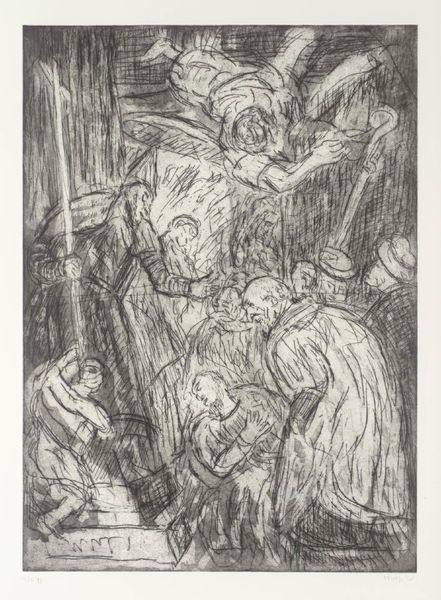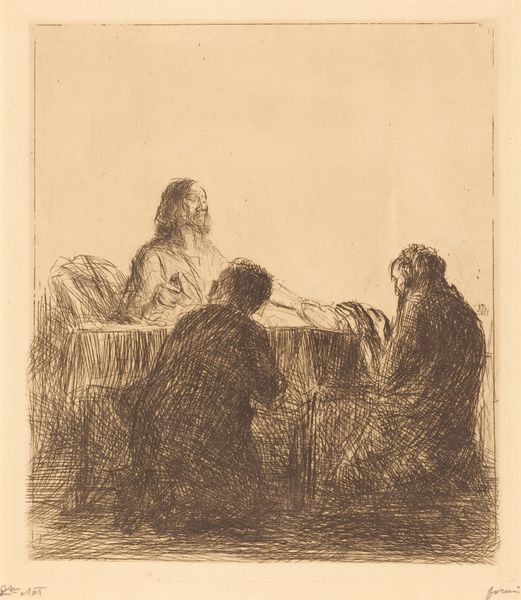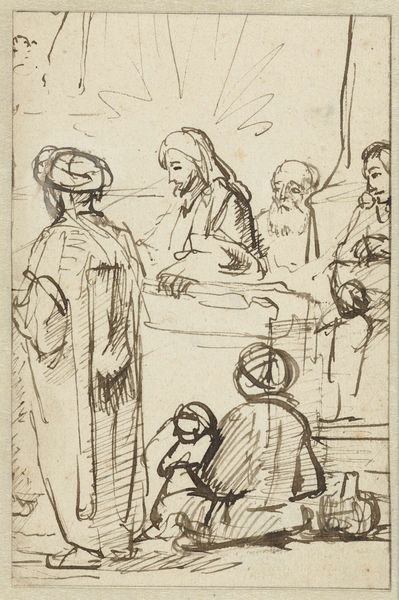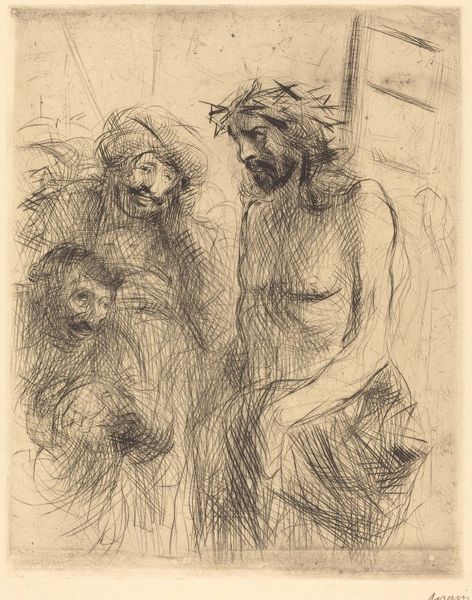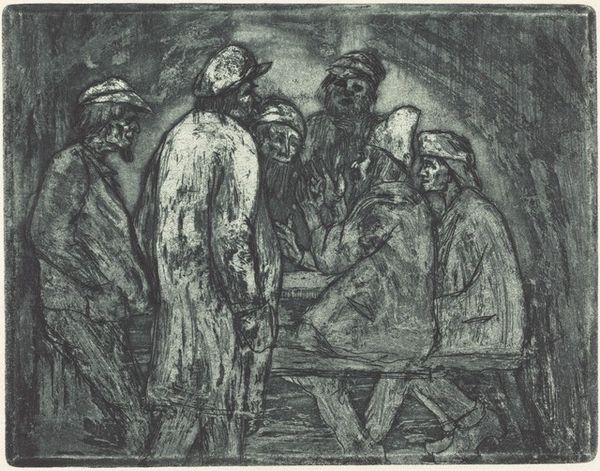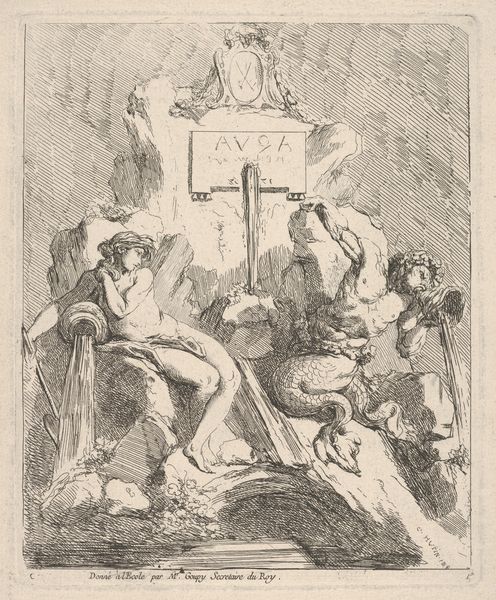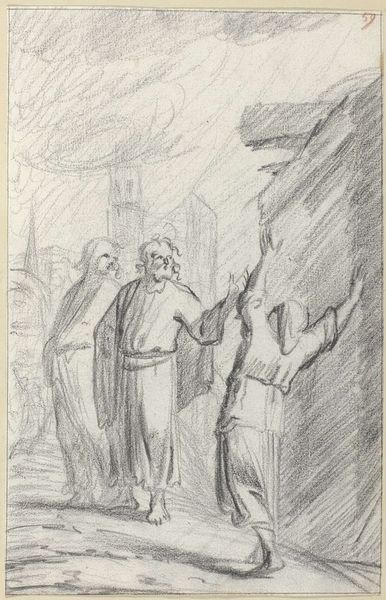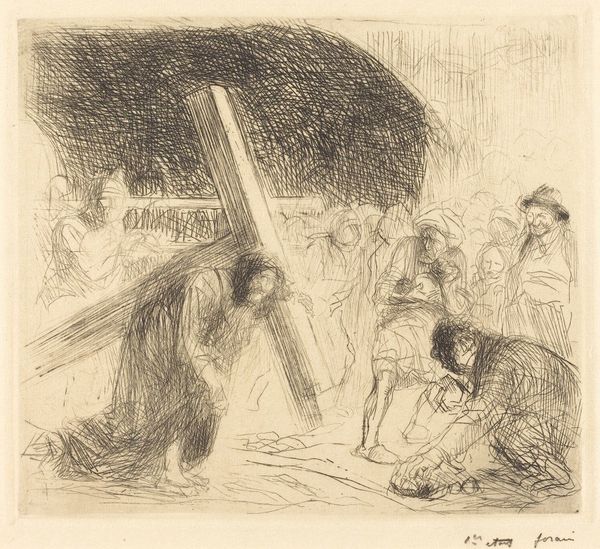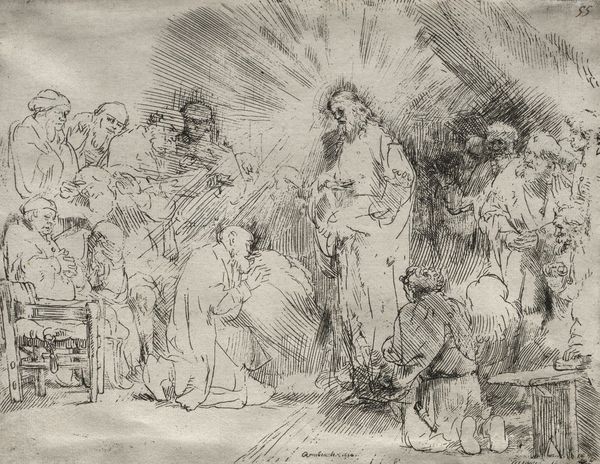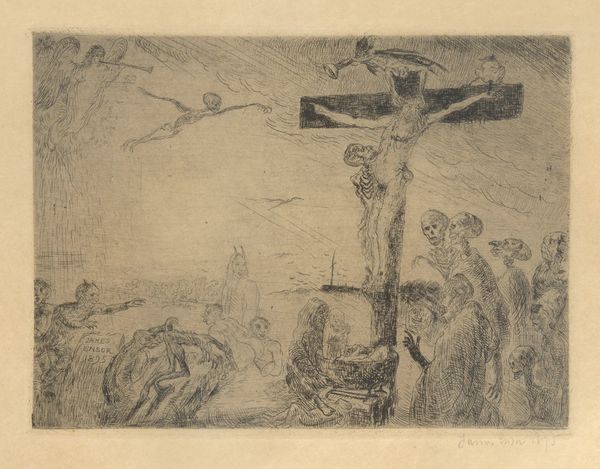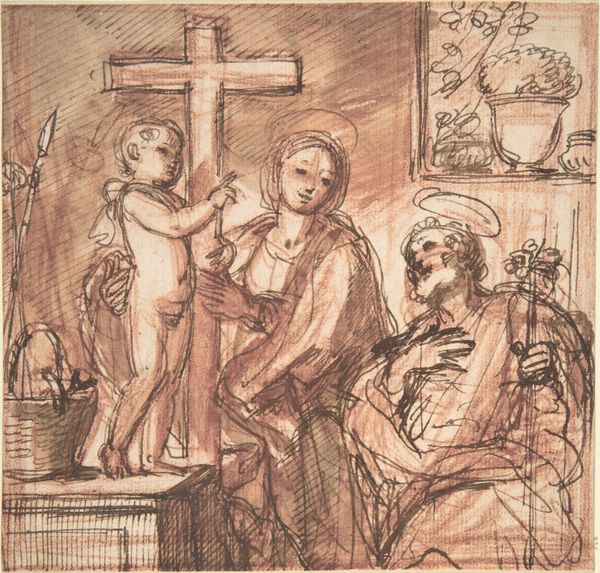
drawing, print, etching
#
portrait
#
drawing
#
ink drawing
# print
#
pen sketch
#
etching
#
figuration
#
expressionism
#
line
#
history-painting
Copyright: Public Domain: Artvee
Curator: The profound etching before us is Lovis Corinth's "Crucifixion," completed between 1921 and 1922. Editor: The immediate impression is one of raw, visceral pain. The stark black lines capture a scene of suffering. There is an expressive energy—the artist emphasizes line and form. Curator: Corinth’s expressionistic style often engages with themes of mortality and religious history, especially in the wake of World War I. The figure of Christ embodies not just spiritual sacrifice but perhaps the broader anguish of a generation ravaged by conflict and political turmoil. This work comes late in his career and speaks of historical pain as well as loss and social inequities. Editor: Note the cross-hatching—it creates a sense of depth and texture. The absence of color throws our attention to the composition and line work; in the negative spaces, a dramatic tension is palpable. The positioning of figures really contributes to the scene's intensity. Curator: Absolutely. It is essential to remember the context of its creation. Corinth, grappling with the devastation of war and witnessing widespread societal disillusionment, likely intended this piece to challenge the traditional, often sanitized, depictions of the crucifixion. How does religious dogma inform structures of authority in this context? That's what he provokes here. Editor: Still, from a compositional perspective, the density of lines near the base, with those mourning figures huddled together, pulls your eye downward. Then Christ as the vertical center takes your sight upward, despite the morbid scene, the lines move dynamically skyward, in an act of sublimity. Curator: His style embraces the subjective and emotional impact of historical events and biblical narratives. The print serves as a poignant commentary on the intersection of faith, trauma, and human resilience. What kind of modern redemption, or lack thereof, is rendered here? Editor: Regardless of theme, Corinth is masterfully using etching techniques. His application of dark ink and minimal lighting is superb. Curator: Seeing art this way is about the importance of understanding art as a product of its historical and social context and prompts a crucial engagement with uncomfortable truths and persistent inequalities. Editor: True. It is a reminder that effective visuals, like expressive brushwork, can have their own power as well. Corinth urges us to contemplate suffering not only as a religious narrative but also as a stark reality that is constructed within a unique visual form.
Comments
No comments
Be the first to comment and join the conversation on the ultimate creative platform.
